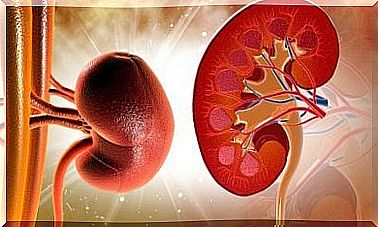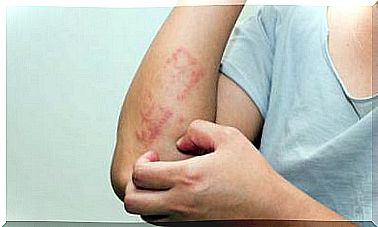Foot Overpronation: What Is It And How Is It Treated?
Foot overpronation is a very common concern for runners. It consists of the foot turning inwards when walking or running. This causes the tread to be different than normal, causing it to first hit the outer edge of the heel on the ground.
The best way to distribute the weight evenly is to support the entire heel first. Then the tip of the foot is supported, as if rolling. Overpronation can increase the risk of injury. For example, it is associated with a higher frequency of ankle sprains and tendonitis.
What is foot overpronation?
Before we start talking about foot overpronation it is important to understand what pronation itself is. It is a physiological mechanism in which the foot rotates inward when walking or running. In this way, the foot cushions and absorbs the impact that occurs when stepping.
However, sometimes this mechanism is excessive. Foot overpronation usually occurs when muscles are weak or fatigued during running. This causes the foot to turn too far inward. Tendons and ligaments begin to be under greater tension than usual.
Foot overpronation is synonymous with overpronation. It is considered to appear when the foot exceeds 12 degrees of pronation. In some cases it can be influenced by poor footwear or by walking in high heels for a long time.

Symptoms that appear
The overpronation of the foot, as we have explained, causes the weight to be sustained on the internal part during the steps. This can trigger numerous symptoms. One of the most common is that the feet are flat.
Similarly, corns may appear on the inside or hammer toes. The latter are a deformity that consists of one of the fingers adopting a position similar to a claw.
People who tend to overpronation often have pain in the arch of the foot. This pain also affects the joints, such as the knee or hip. By not adequately cushioning the impact is absorbed by the upper areas of the lower limbs.
It can even affect the back. Ligaments and tendons also suffer. That is why it is related to pathologies such as Achilles tendonitis and plantar fasciitis. Similarly, overpronation of the foot is associated with an increased risk of developing a heel spur.
A study carried out at the University School of Health Sciences of Seville explains that this mechanism can be associated with the pyramidal corridor syndrome. It is a problem that causes pain and numbness in the buttocks and the back of the leg. It occurs because the sciatic nerve is compressed by the pyramidal muscle.
How is foot overpronation diagnosed?
There are different ways to diagnose foot overpronation. The truth is that you can perform a self-diagnosis. When this movement occurs continuously, the shoes themselves wear out more on one side than on the other.
In this case, the wear appears on the inside of the sole, closer to the tip of the foot. In the same way, as we have pointed out in the previous section, the feet are usually flatter. That is why it can be seen at a glance.
It is essential to pay attention to the symptoms. Instability is very characteristic, as is pain in the plantar arch. When the situation has advanced, the deformity of the fingers is also noticeable, especially in the big toes and the second.
Diagnosis by a specialist
Many people only experience pain and not deformities. For this reason, it may be necessary for someone to observe the way you walk or run. This will show the excessive pronation movement.
Currently there are very precise methods that allow us to know the shape of the foot and how it adapts to the ground. They are called biomechanical studies . The plantar footprint can be studied using pressure platforms, which are a kind of carpet consisting of numerous sensors.
Treatments for foot overpronation
As we have explained, overpronation of the foot can increase the risk of joint problems and other injuries. Also, it tends to cause pain when walking or running. We explain to you which are the most used treatments.
Suitable footwear
Footwear is essential for us to walk and move in a correct way. Ideally, the shoes should adapt to the shape of the foot and the footprint. In the case of people who tend to overpronation, this becomes even more important.
It is recommended that the footwear has good support and is padded. As the areas of greatest pressure are the internal ones, the heel and the first two toes, more protection must be added there.
Plantar orthoses are the most widely used approach, using templates. As an article published in the Spanish Journal of Rheumatology explains, the templates can be of different types and what is sought is to correct the position or contain the impact.
To make a proper plantar orthosis, a thorough study of the feet and gait is first performed. Then a corresponding mold is manufactured, introducing the correction factor that is needed.
Exercises for foot overpronation

There are different exercises that can improve tendon and muscle tension. Ideally, you should see a physical therapist for personalized recommendations.
A study carried out at the University of Coruña suggests that exercises focused on the external rotators and hip abductors can improve the situation. A simple way to specify them is to separate the feet at the height of the hips, while standing, trying to support the weight on the outer edges of the foot.
You have to hold this posture for a few seconds and repeat several times. It is advisable to perform this exercise frequently and try to maintain that position when walking.
Another exercise is to stretch the leg muscles. The easiest way to do this is to sit on the floor with your legs straight. You have to try to touch the tips of your fingers. If it is not reached, you can use an elastic band to go down little by little.
Foot overpronation is not considered a pathology
The truth is that foot overpronation is not really a clinical condition. It is an alteration of the physiological mechanism of pronation. However, as we have seen, it can lead to pain and other conditions, such as plantar fasciitis.
Therefore, even if it is not a serious situation, it is essential to consult a specialist. The sooner shoes are adapted or specific exercises are started, the more likely it is to avoid problems secondary to overpronation.









